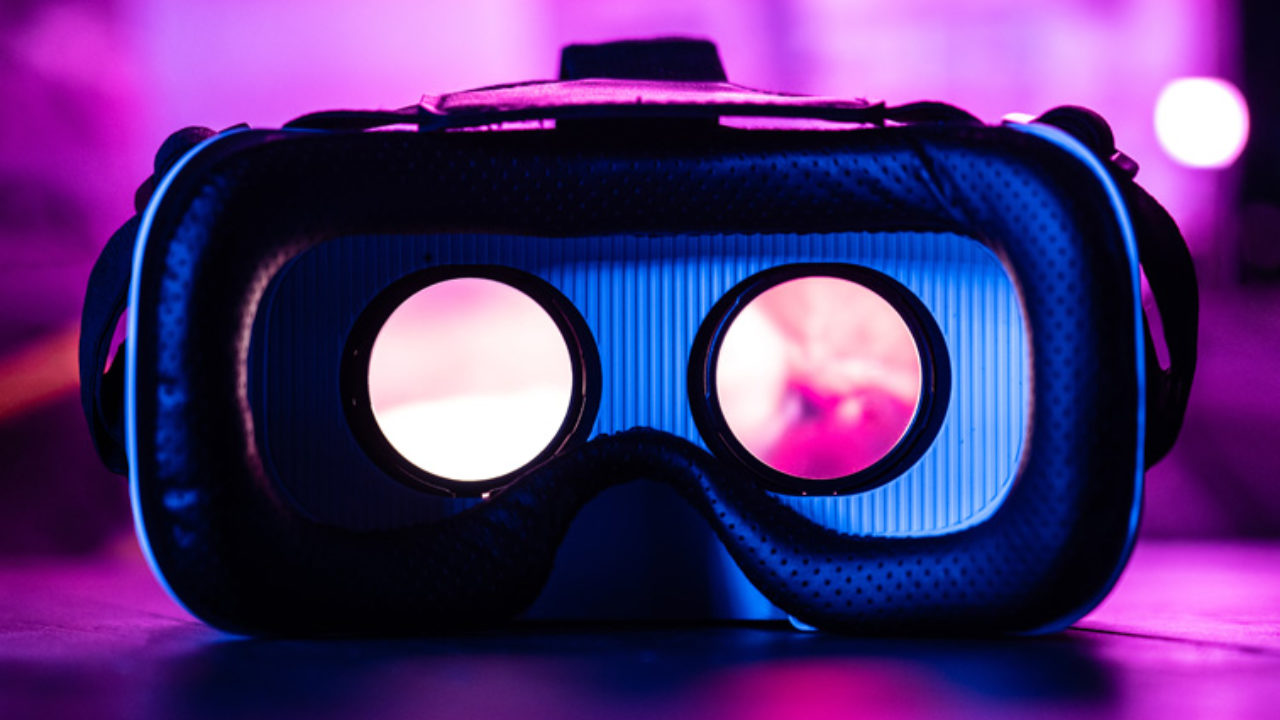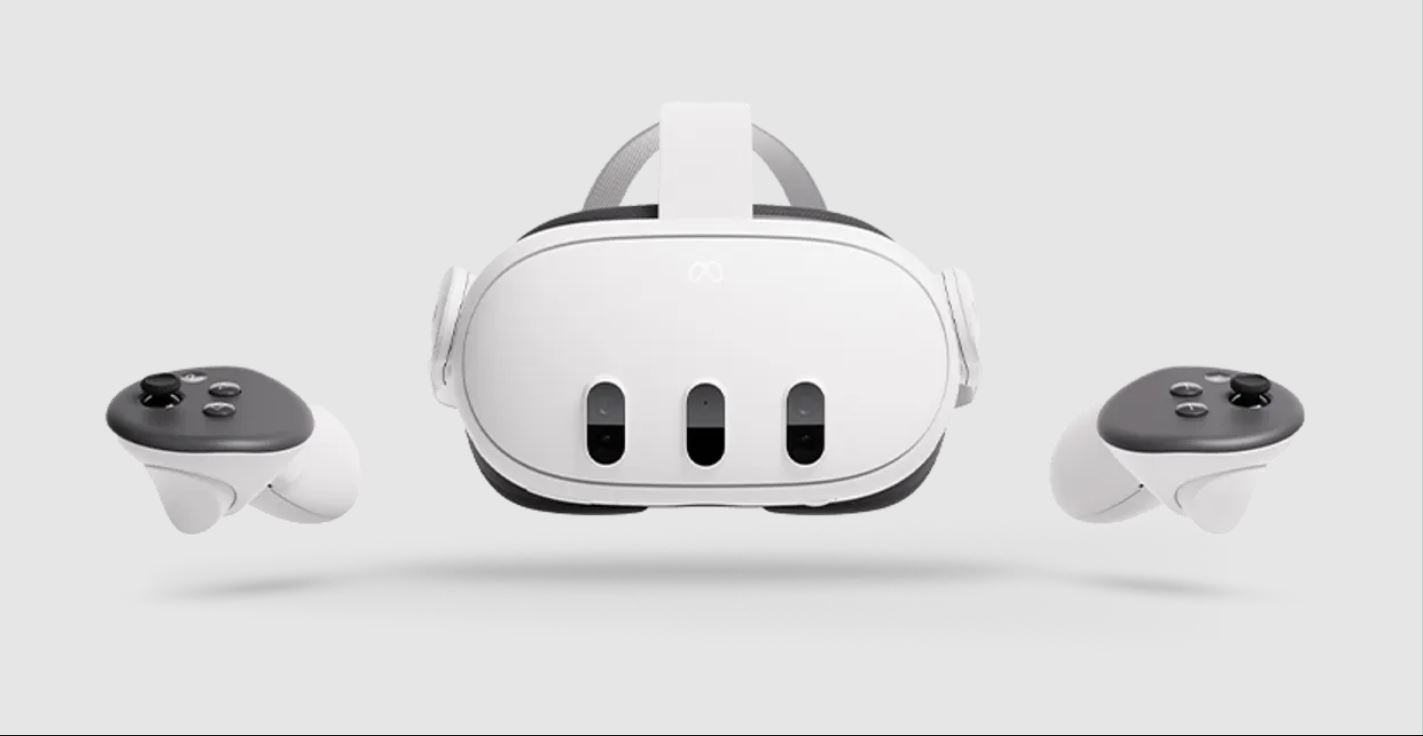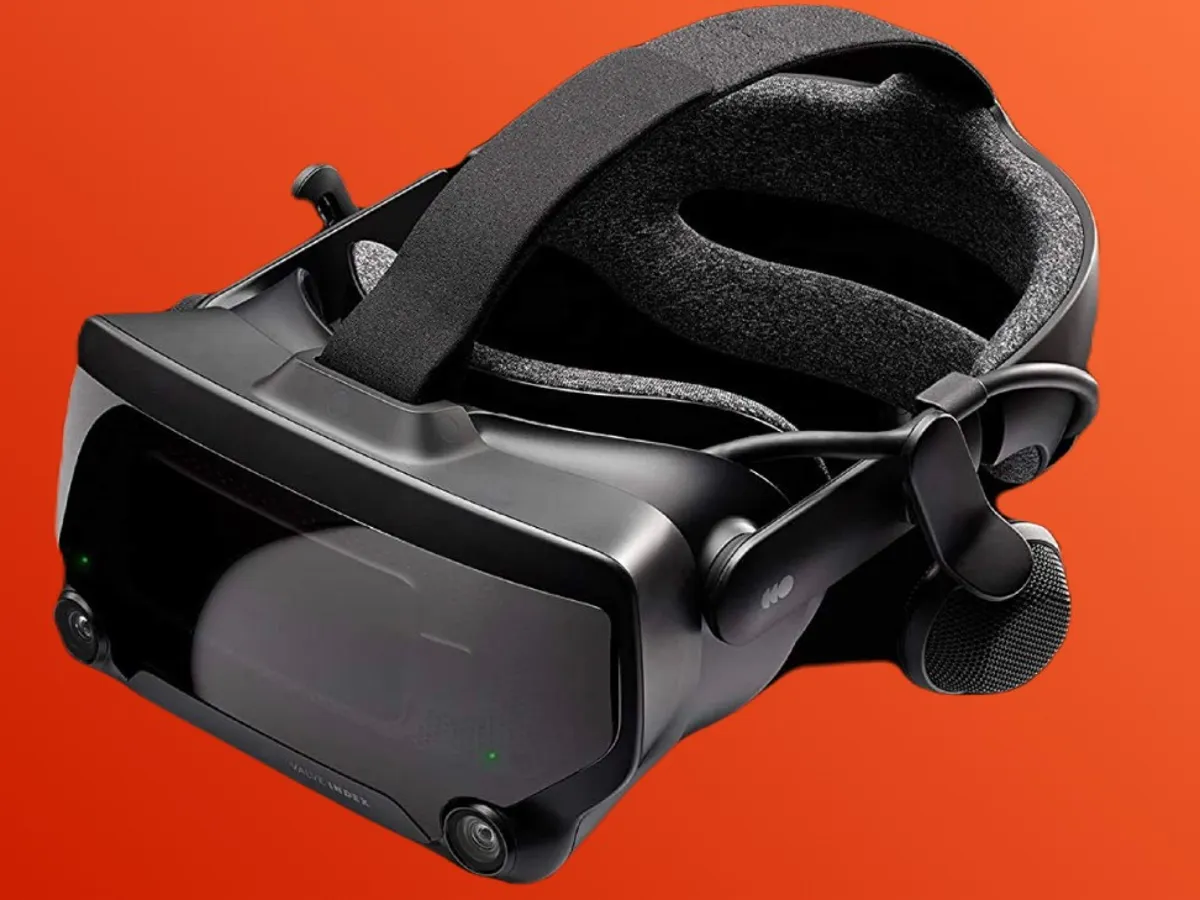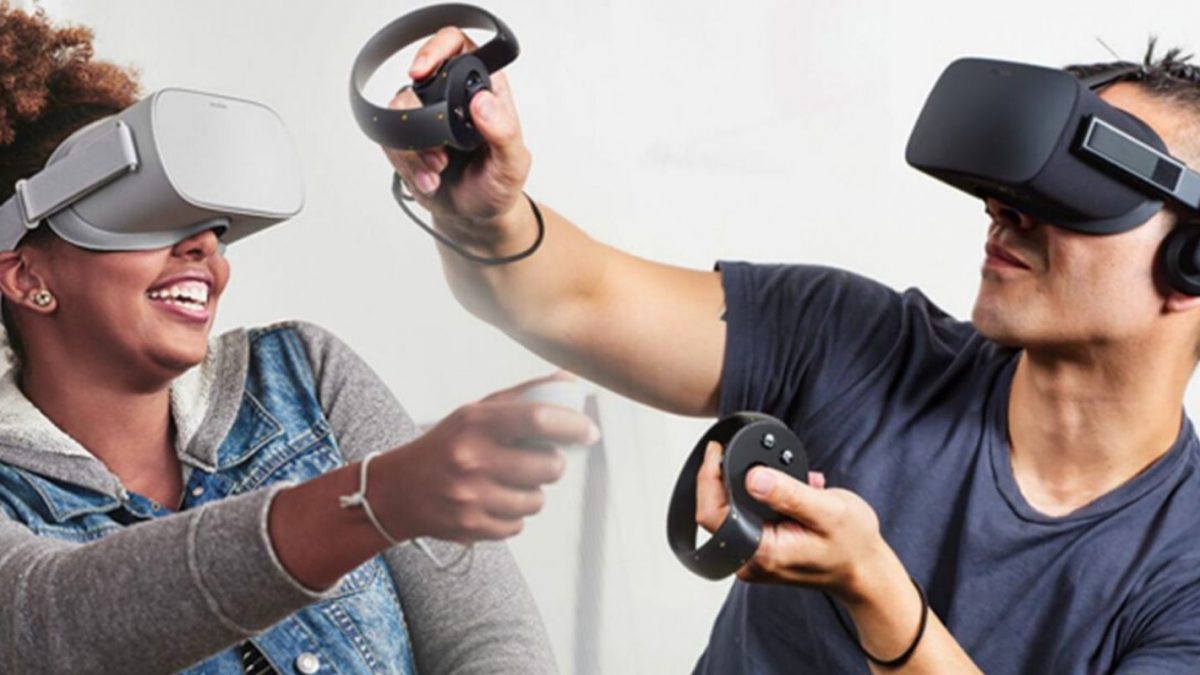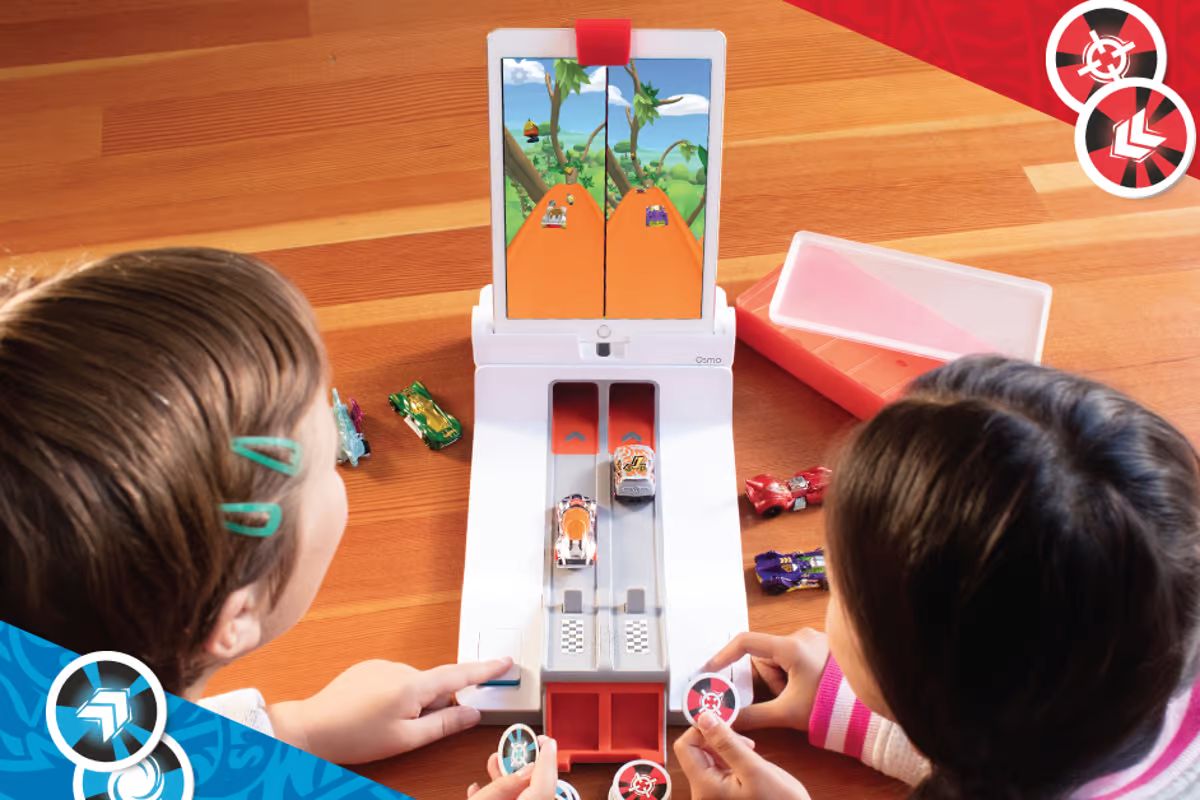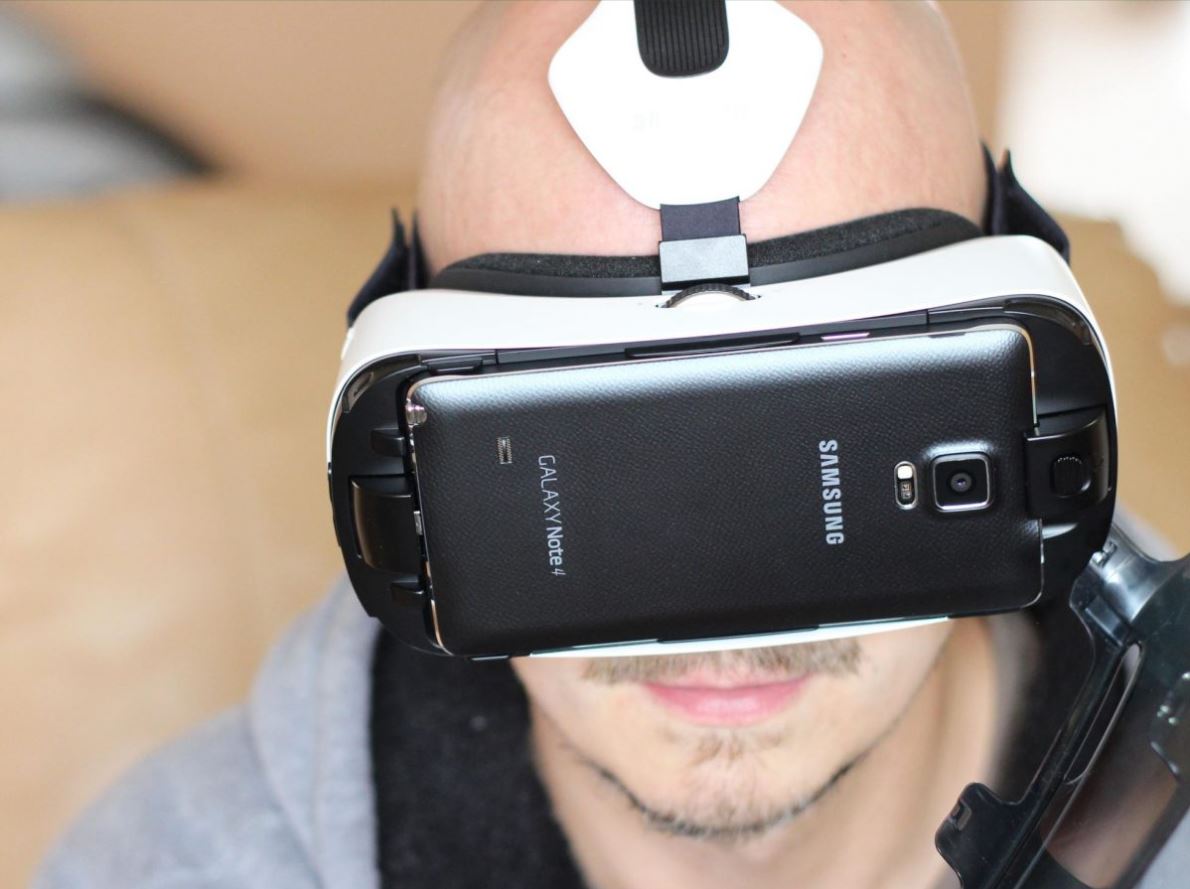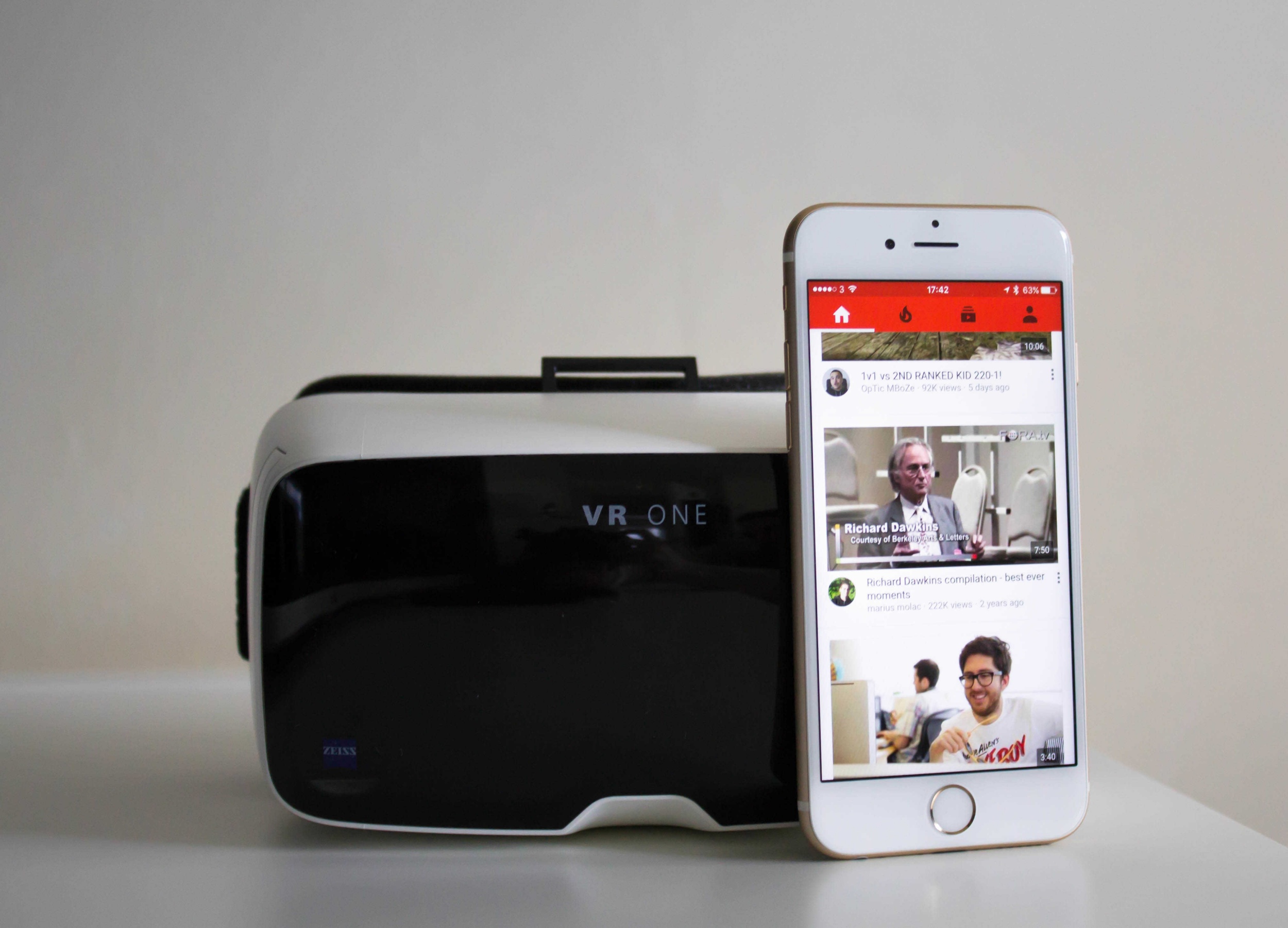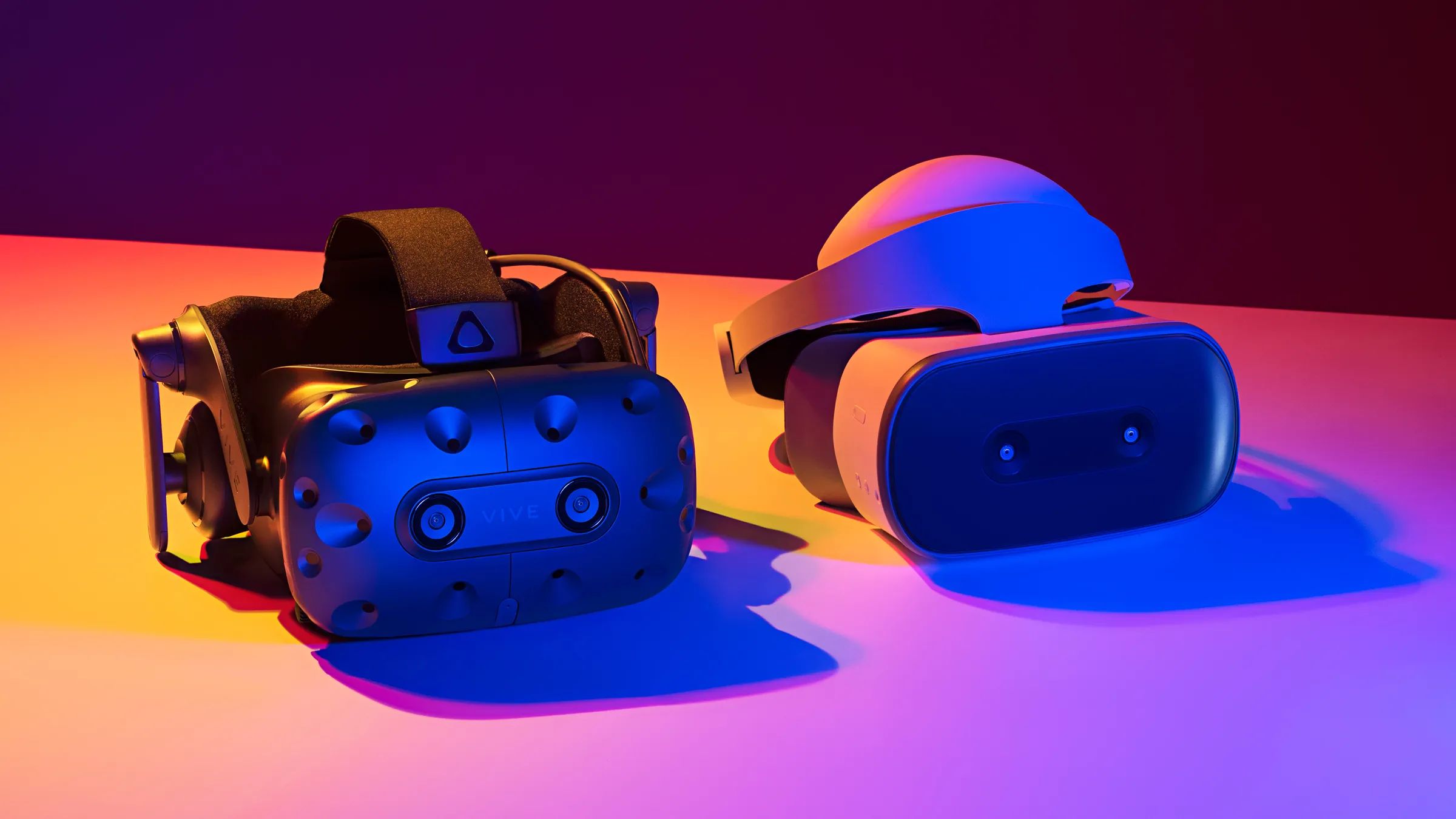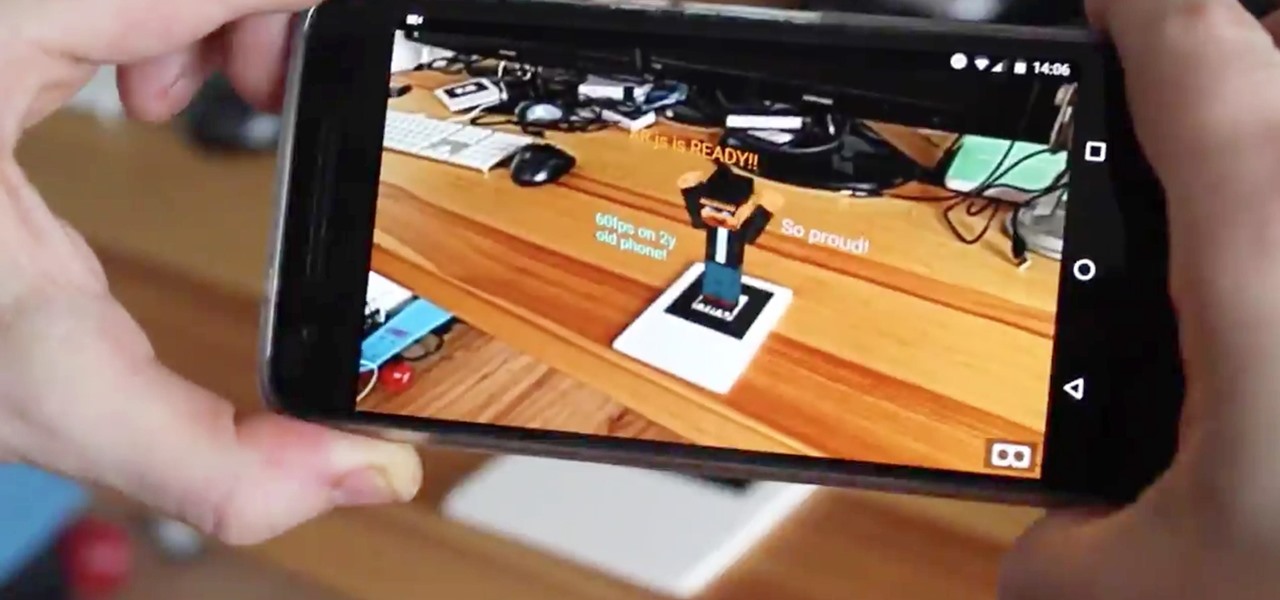Introduction
Virtual reality (VR) has become an increasingly popular technology in recent years, captivating people’s imaginations and transforming various industries. From gaming and entertainment to education and healthcare, virtual reality offers immersive experiences that transport users to virtual worlds.
But what exactly is virtual reality and how does it work? In simple terms, virtual reality refers to a simulated environment that can be explored and interacted with through sensory experiences, such as sight, hearing, and touch. It simulates real-world scenarios or imaginary settings and allows users to engage with the digital environment as if they were there in person.
The concept of virtual reality has been around for decades, but recent advancements in technology have made it more accessible and realistic than ever before. It offers a sense of presence and immersion by convincingly replicating the user’s physical presence in a virtual environment.
Throughout this article, we will delve into the various components of virtual reality, including the display devices, tracking systems, input devices, and the processing power required to bring virtual reality experiences to life. We will explore how these components work together to create a seamless and captivating virtual reality experience for users.
Furthermore, we will discuss the history of virtual reality, highlighting significant milestones and breakthroughs that have shaped this technology into what it is today. Alongside that, we will examine the current state of virtual reality and its potential future developments.
So, whether you’re a tech enthusiast curious about the inner workings of virtual reality or a business owner considering the integration of VR into your operations, this article will provide you with a comprehensive understanding of what virtual reality is and how it functions.
What is Virtual Reality?
Virtual reality (VR) is a simulated experience that can be similar to or completely different from the real world. It creates a computer-generated environment that allows users to interact and immerse themselves in a three-dimensional, artificial environment.
Through the use of various technologies, virtual reality combines graphics, audio, and sensory feedback to create a sense of presence and immersion. Users can explore and interact with this virtual environment as if it were real, blurring the lines between the physical and virtual worlds.
One key aspect of virtual reality is the sensory experiences it provides. Visual cues are delivered through high-resolution displays, typically in the form of head-mounted displays (HMDs) or projectors. These displays create a wide field of view that fills the user’s peripheral vision, enhancing the sense of presence within the virtual world.
Audio plays a crucial role in virtual reality as well. Spatial sound technology delivers realistic 3D audio, allowing users to locate and perceive sound sources in the virtual environment. This adds another layer of immersion by creating a sense of depth and directionality to the audio experience.
Another important element of virtual reality is the ability to interact with the virtual environment. This is made possible through tracking systems that monitor the user’s movements and translate them into the virtual space. Tracking can be achieved using various methods, including inside-out tracking, outside-in tracking, or infrared sensors.
In addition to movement tracking, virtual reality relies on input devices to enable user interaction. These can range from traditional controllers and keyboards to more advanced devices such as motion controllers or haptic feedback gloves. These input devices allow users to manipulate objects, navigate through virtual worlds, and engage with the virtual environment in a natural and intuitive way.
Virtual reality also requires significant processing power to render the complex graphics and simulations in real-time. This is particularly crucial for creating high-quality visuals and maintaining a smooth and immersive experience. Advanced GPUs (Graphics Processing Units) and CPUs (Central Processing Units) are necessary to handle the computational demands of virtual reality applications.
Overall, virtual reality is a transformative technology that has the potential to revolutionize various industries. From gaming and entertainment to education, healthcare, and even architecture, virtual reality opens up new possibilities for immersive experiences, training simulations, and virtual collaborations. As technology continues to evolve, we can expect virtual reality to become even more realistic, accessible, and integrated into our daily lives.
The History of Virtual Reality
The concept of virtual reality dates back several decades, with its origins rooted in science fiction and the imaginations of visionaries. While the development and popularization of virtual reality technology have occurred in recent years, its foundations were laid down in the mid-20th century.
The idea of immersive, simulated environments can be traced back to the 1930s, when science fiction writers such as Stanley G. Weinbaum and Ray Bradbury explored the concept in their stories. However, it wasn’t until the 1960s that the first prototypes of virtual reality devices began to emerge.
In 1961, Morton Heilig, often considered the “father of virtual reality,” developed the Sensorama, a machine that offered a multi-sensory cinematic experience. With the Sensorama, users could watch stereoscopic 3D films while experiencing accompanying sounds, vibrations, and even smells.
Throughout the 1960s and 1970s, research institutions and military organizations worked on early iterations of virtual reality technology. In 1965, Ivan Sutherland created the “Ultimate Display,” a head-mounted device that introduced the concept of immersive augmented reality.
Then, in the late 1980s and early 1990s, virtual reality gained widespread attention and popularity. Companies like VPL Research and NASA developed pioneering virtual reality systems, such as the DataGlove and the Virtual Environment Workstation, which paved the way for future advancements in the field.
However, it was the 1992 release of the Virtuality arcade machine that brought virtual reality into mainstream consciousness. Gamers could step into a booth, put on a head-mounted display, and engage in immersive virtual reality gaming experiences.
Despite the initial excitement, virtual reality experienced a decline in popularity throughout the 1990s. Limited technological capabilities and high costs hindered its widespread adoption. Many considered virtual reality “ahead of its time.”
It wasn’t until the early 2010s that virtual reality made its resurgence. Technological advancements, particularly in display technologies, computing power, and motion tracking, propelled virtual reality back into the spotlight.
In 2012, Palmer Luckey introduced the Oculus Rift, a groundbreaking virtual reality headset that offered a more affordable and accessible solution for consumers. The success of the Oculus Rift inspired other companies, such as HTC with the Vive and Sony with the PlayStation VR, to enter the virtual reality market.
Since then, virtual reality has continued to evolve and expand into various industries. It has found applications in gaming, simulation training, healthcare, tourism, and more. Advances in graphics, audio, and haptic feedback technologies have made virtual reality experiences more realistic and immersive than ever before.
Looking forward, virtual reality is poised to have an even greater impact on our lives. As technology continues to advance, we can expect virtual reality to become more accessible, portable, and integrated into our daily routines. The future of virtual reality holds endless possibilities for innovation and transformation across numerous sectors.
Key Components of Virtual Reality
Virtual reality (VR) technology comprises several key components that work together to create immersive experiences. These components include display devices, tracking systems, input devices, and the necessary processing power. Let’s explore each of these components in more detail:
Display Devices: Display devices are crucial in providing users with a visual representation of the virtual environment. Head-mounted displays (HMDs) like the Oculus Rift and HTC Vive are popular options that users wear on their heads, covering their eyes with high-resolution screens. These screens produce stereoscopic 3D visuals, allowing users to perceive depth in the virtual world. Other display options include projection-based systems and immersive dome screens, which offer a larger field of view and can accommodate multiple users simultaneously.
Tracking Systems: Tracking systems capture and interpret the user’s movements and translate them into the virtual environment. These systems ensure that users can interact with and navigate through the virtual world naturally. Commonly used tracking methods include inside-out tracking, where sensors on the VR device track the user’s movements, and outside-in tracking, where external sensors or cameras track the user’s position. Infrared sensors, motion capture cameras, and laser-based systems are commonly employed for tracking purposes.
Input Devices: Input devices allow users to interact with the virtual environment. These devices range from traditional controllers and keyboards to more advanced options like motion controllers, haptic feedback gloves, and full body tracking suits. Motion controllers, such as the Oculus Touch or the HTC Vive controllers, enable users to manipulate virtual objects and navigate through the virtual space. Haptic feedback gloves provide a sense of touch, enabling users to feel objects and textures within the virtual world. The development of more immersive and intuitive input devices continues to enhance the level of realism and interaction in virtual reality experiences.
Processing Power: The seamless rendering of realistic virtual environments requires significant processing power. The computer’s processing unit (CPU) and graphics processing unit (GPU) play crucial roles in powering VR experiences. These components handle the computational demands of rendering high-quality graphics, maintaining a smooth frame rate, and processing real-time data from tracking systems and input devices. As virtual reality applications become increasingly complex and demanding, advancements in processing power are essential to ensure a realistic and immersive experience for users.
These key components work together to create immersive and interactive virtual reality experiences. They enable users to explore virtual worlds, interact with objects and characters, and engage in various activities in a way that blurs the boundaries between the real and digital realms. As technology advances, we can expect these components to continue evolving, resulting in even more realistic, intuitive, and accessible virtual reality experiences.
Display Devices Used in Virtual Reality
Display devices play a vital role in virtual reality (VR) by providing users with a visual representation of the virtual environment they are exploring. These devices are responsible for delivering immersive and realistic visuals that contribute to the overall sense of presence and immersion. Let’s explore some of the commonly used display devices in VR:
Head-Mounted Displays (HMDs): HMDs are perhaps the most well-known and widely used display devices in virtual reality. These devices consist of a headset that users wear on their heads, covering their eyes with one or more screens. The screens display stereoscopic 3D images, giving users a sense of depth and dimension in the virtual world. Popular HMDs include the Oculus Rift, HTC Vive, and PlayStation VR. These devices often offer high-resolution displays and a wide field of view to enhance the visual experience.
Projection-Based Systems: Projection-based systems are another type of display device used in virtual reality. These systems project images or videos onto large screens or surfaces, creating an immersive viewing experience for multiple users simultaneously. Projection-based systems are commonly used in VR applications such as immersive theaters, art installations, and theme park attractions. They offer a wider field of view compared to HMDs and can accommodate larger audiences.
Immersive Dome Screens: Immersive dome screens, also known as planetarium domes, are large curved screens that surround the viewer. These screens provide a highly immersive experience by covering the user’s entire field of view. Immersive dome screens are typically used in planetariums and other large-scale VR installations. They offer a seamless and all-encompassing view of virtual environments, enhancing the feeling of being fully immersed in the virtual world.
Augmented Reality Glasses: While not strictly limited to virtual reality, augmented reality (AR) glasses such as Microsoft HoloLens and Magic Leap One can also provide visual displays for virtual reality experiences. These glasses overlay virtual elements onto the real world, allowing users to interact with virtual objects in their physical surroundings. AR glasses offer a unique blend of virtual and real-world visuals, enabling different types of interactive and mixed reality experiences.
These display devices are continually advancing to provide users with more immersive, high-fidelity visuals in virtual reality. Technologies like OLED (Organic Light Emitting Diode) and LCD (Liquid Crystal Display) panels are employed to achieve high resolutions and fast refresh rates. Additionally, the field of view is also expanding to immerse users more fully in the virtual environment.
It’s worth noting that the choice of display device depends on the intended application, cost, and user requirements. HMDs are popular for individual users who want an immersive and personal virtual reality experience. Projection-based systems and immersive dome screens are ideal for group experiences in public venues, allowing multiple people to share the virtual experience simultaneously.
As virtual reality technology continues to evolve, displays will play an essential role in enhancing the visual quality, immersion, and overall user experience. Advancements in display technology will lead to even more realistic and captivating virtual reality experiences, opening up new possibilities for entertainment, education, training, and various other applications.
Tracking Systems in Virtual Reality
Tracking systems are a critical component of virtual reality (VR) technology as they enable the accurate monitoring and interpretation of the user’s movements and position within the virtual environment. These systems play a crucial role in creating an immersive and realistic VR experience. Let’s explore some of the commonly used tracking systems in virtual reality:
Inside-Out Tracking: Inside-out tracking refers to a tracking method where sensors on the VR device track the user’s movements. Cameras or sensors are integrated into the VR headset, controllers, or other accessories, allowing them to track the position and orientation of these devices in real-time. This approach provides freedom of movement for the user since external sensors are not required. Inside-out tracking has become increasingly popular in recent years, as it offers convenience and ease of use for VR enthusiasts.
Outside-In Tracking: Outside-in tracking is another commonly used method where external sensors or cameras track the user’s position and movements. These sensors are strategically placed around the play area to provide accurate and precise tracking data. The sensors emit signals, such as infrared light or radio waves, which are detected by the VR device or special markers placed on the user or objects. This type of tracking is highly accurate and can track multiple users simultaneously. However, it typically requires a dedicated setup and calibration.
Motion Capture Systems: Motion capture systems, widely used in the film and gaming industries, are also employed in virtual reality. These systems use cameras or sensors to track the movement of the user’s body or specific body parts, transforming them into digital representations within the virtual environment. Multiple cameras capture the user’s movements from different angles, allowing for precise tracking and realistic movement replication. Motion capture systems offer a high level of accuracy and fidelity but are more commonly used in professional or specialized VR applications due to their complexity and cost.
Laser-Based Systems: Laser-based tracking systems use laser beams to measure the position and distance of the user and objects within the virtual environment. These systems emit lasers, which are reflected back by the user or objects, allowing precise calculations of distance and movement. Laser-based tracking offers high accuracy and low latency, making it suitable for applications that require precise measurements, such as industrial simulations or medical training. However, it typically requires a controlled environment and can be more expensive than other tracking methods.
Each tracking system has its advantages and limitations, and the choice often depends on the intended application, budget, and specific requirements. Inside-out tracking is gaining popularity due to its ease of use and accessibility, while outside-in tracking and motion capture systems offer greater accuracy and fidelity for more demanding VR experiences.
The advancement of tracking technology is an ongoing process in virtual reality. Companies are continually developing new tracking systems, improving accuracy, reducing latency, and exploring novel methods such as eye tracking and hand gesture recognition. These advancements will further enhance the user’s immersion and interaction within the virtual environment, paving the way for even more realistic and engaging virtual reality experiences.
Input Devices in Virtual Reality
Input devices are an integral part of the virtual reality (VR) experience as they allow users to interact with and control the virtual environment. These devices enable users to manipulate objects, navigate through virtual worlds, and engage with the digital content in a natural and intuitive manner. Let’s explore some of the commonly used input devices in virtual reality:
Motion Controllers: Motion controllers are handheld devices that track the user’s movements and gestures in real-time. These controllers allow users to reach out, pick up objects, and manipulate them within the virtual environment. Motion controllers typically have buttons or triggers that users can press to perform actions or interact with virtual menus. Companies like Oculus, HTC, and PlayStation offer their own motion controllers, such as Oculus Touch, HTC Vive Controllers, and PlayStation Move controllers.
Gamepads and Controllers: Gamepads and controllers, similar to those used in traditional gaming consoles, are often compatible with virtual reality platforms. These input devices feature buttons, analog sticks, and triggers that can be used to control movement, actions, and interactions in VR games and experiences. Gamepads and controllers offer a familiar and versatile input option for users, especially those transitioning from traditional gaming.
Haptic Feedback Devices: Haptic feedback devices provide users with a sense of touch and tactile feedback within the virtual environment. These devices generate vibrations or other sensations to simulate the feeling of touching or interacting with virtual objects. Examples include haptic gloves, vests, or accessories equipped with vibrating motors or force feedback mechanisms. Haptic feedback devices can greatly enhance the immersiveness of VR experiences by adding a sense of texture, weight, and physical presence to virtual objects.
Gesture Recognition: Some VR systems employ gesture recognition technology to interpret and respond to the user’s hand or body movements. Cameras or sensors track the user’s gestures, allowing them to perform actions like waving, pointing, or making specific gestures to interact with objects or trigger events in the virtual environment. Gesture recognition provides a more natural and intuitive way of interaction, allowing users to use their own body language to control and navigate through VR experiences.
Eye Tracking Devices: Eye tracking technology is gaining traction in virtual reality, primarily for its potential to improve immersion and enhance user interaction. Eye tracking devices monitor the user’s eye movements, allowing for more realistic rendering of depth of field, foveated rendering, and gaze-based interaction. By tracking the direction of the user’s gaze, VR applications can adjust focus, highlight specific objects, or enable hands-free interaction based on where the user is looking.
These are just a few examples of input devices used in virtual reality. The choice of input device often depends on the specific VR application, user preferences, and the level of interaction and immersion desired. As VR technology continues to evolve, we can expect to see more innovative input devices and methods, such as full-body tracking suits, brain-computer interfaces, and other advancements that will further enhance the user’s ability to interact naturally and intuitively within the virtual environment.
Processing Power Needed for Virtual Reality
Virtual reality (VR) is a computationally intensive technology that requires significant processing power to deliver immersive and realistic experiences. The processing power of a computer or VR device plays a crucial role in rendering high-quality graphics, maintaining a smooth frame rate, and processing real-time data from tracking systems and input devices. Let’s explore the processing power required for virtual reality:
CPU (Central Processing Unit): The CPU is responsible for executing program instructions and performing general computations. In virtual reality, the CPU handles various tasks such as physics simulations, audio processing, and handling input signals from tracking devices and controllers. A powerful CPU is essential for a smooth and responsive virtual reality experience.
GPU (Graphics Processing Unit): The GPU is the workhorse of virtual reality, responsible for rendering highly detailed and realistic graphics. It performs complex calculations to transform 3D models, textures, and lighting into the final visual output displayed on the VR headset. The GPU’s core processing power is measured in teraflops, and higher-end GPUs are capable of delivering smoother frame rates and supporting more demanding VR applications.
RAM (Random Access Memory): RAM is crucial for storing and accessing data that is actively used by the CPU and GPU. In virtual reality, a sufficient amount of RAM is needed to store the virtual environment’s assets, textures, and other data. Insufficient RAM can lead to lag, stuttering, or long loading times during VR experiences. The amount of RAM required largely depends on the complexity of the virtual environment and the VR application.
Storage: While storage does not directly impact the processing power, it plays a role in loading times and caching data for quick access. SSDs (Solid State Drives) are recommended for faster data transfer rates and reduced loading times compared to traditional hard disk drives (HDDs). This can enhance the overall VR experience by minimizing wait times and ensuring smooth transitions between different scenes or levels.
Thermal Management: Virtual reality applications can put a significant strain on the processing components, generating a substantial amount of heat. Efficient thermal management, including an adequate cooling system, is crucial to prevent thermal throttling and ensure optimal performance. Overheating can lead to performance degradation, system instability, or even hardware damage.
It’s important to note that the specific processing power required for virtual reality can vary depending on the complexity of the VR application, the graphical fidelity desired, and the performance requirements set by the VR hardware manufacturer. As VR experiences become more realistic and demanding, the need for more powerful CPUs and GPUs will continue to grow.
To ensure an optimal VR experience, it is recommended to meet or exceed the minimum system requirements specified by the VR hardware manufacturer. This ensures that the processing power is sufficient to deliver smooth, immersive, and enjoyable virtual reality experiences.
How Virtual Reality Works
Virtual reality (VR) is a complex technology that combines various components to create immersive and interactive experiences. In essence, VR works by simulating a three-dimensional virtual environment and providing users with the ability to interact with it. Let’s explore the underlying processes of how virtual reality works:
Creating the Virtual Environment: The first step in creating a virtual reality experience is to design and build the virtual environment. This involves creating 3D models, textures, and animations that form the virtual world. Graphic artists, designers, and developers use specialized software to bring virtual environments to life, adding realistic lighting, textures, and physics simulations to enhance the immersion.
Displaying the Virtual Environment: Once the virtual environment is created, it needs to be displayed to the user. This is where the display devices, like head-mounted displays (HMDs), come into play. HMDs have high-resolution screens that wrap around the user’s field of view, providing a stereoscopic 3D view of the virtual world. The screens update rapidly, refreshing the visuals to maintain a smooth, responsive display.
Tracking the User’s Movements: To enable user interaction within the virtual environment, tracking systems are utilized. These systems capture the user’s movements and translate them into the virtual space. Cameras or sensors track the position and orientation of the user’s head, hands, and sometimes the entire body. This allows users to explore and interact with the virtual world by moving their head, hands, and body naturally.
Providing Audio Feedback: Audio plays a critical role in the virtual reality experience, further enhancing immersion. Spatial audio technology is employed to create a 3D audio environment, where sounds appear to originate from specific directions and distances within the virtual world. This adds realism and depth to the auditory experience and helps users locate and orient themselves within the virtual environment.
Interacting with the Virtual Environment: In addition to movement, virtual reality also focuses on intuitive interaction. Input devices like motion controllers or haptic feedback devices enable users to manipulate virtual objects, perform actions, and navigate through the virtual world. The user’s actions are translated into the virtual environment, allowing them to pick up objects, press buttons, or interact with elements in a realistic way.
Maintaining Smooth Performance: To provide a seamless virtual reality experience, it is crucial to maintain smooth performance. This requires powerful processing units, including CPUs and GPUs, capable of rendering high-quality graphics in real-time. Optimizations like foveated rendering, which allocates more resources to the user’s focal point, and predictive tracking algorithms help enhance performance and reduce motion sickness.
All these processes work together to create an immersive and interactive virtual reality experience. Users can be transported to different worlds, explore new environments, or perform various tasks, all within the bounds of the virtual space. As technology continues to advance, virtual reality experiences will become even more realistic, interactive, and accessible, opening up new possibilities for entertainment, education, training, and more.
The Future of Virtual Reality
The future of virtual reality (VR) holds immense potential for innovation, transformation, and widespread adoption. As technology continues to advance, we can expect virtual reality to become even more realistic, immersive, and accessible. Here are some key areas that are expected to shape the future of VR:
Improved Hardware: One significant aspect of the future of VR is the continuous improvement in hardware technologies. Display devices, such as head-mounted displays (HMDs), are likely to offer higher resolutions, wider fields of view, and improved refresh rates. Advancements in tracking systems will focus on enhancing accuracy and reducing latency to provide a more seamless and precise user experience. Additionally, input devices will become more intuitive and sophisticated, enabling users to interact naturally with virtual environments.
Wireless and Portable VR: Wireless and portable VR solutions are set to become more prevalent. Currently, VR experiences often require cables connected to powerful computers, limiting mobility. However, future developments could include standalone VR headsets that do not rely on cable connections or external hardware. These advancements will provide users with greater freedom of movement, making VR more accessible and convenient for various applications.
Augmented Reality Integration: Augmented reality (AR) and virtual reality (VR) are often seen as complementary technologies. As AR technology continues to advance, the integration of AR and VR experiences will become more seamless. This fusion of virtual and real elements will allow users to interact with both the physical and digital worlds simultaneously, opening up new possibilities for mixed reality experiences.
Social VR: The future of VR will also focus on social interactions within virtual environments. Social VR platforms will enable users to connect with friends, family, colleagues, and even strangers in shared virtual spaces. Users will be able to socialize, collaborate, and participate in virtual events, creating a sense of presence and human connection despite physical distances.
Industry-Specific Applications: Virtual reality will have a significant impact on various industries, including gaming, entertainment, education, healthcare, architecture, and more. As the technology matures, we can expect to see more industry-specific applications that leverage VR for training simulations, immersive storytelling, virtual travel experiences, remote collaboration, and medical therapies. VR will revolutionize how we learn, work, and experience the world around us.
Advancements in Artificial Intelligence: Artificial intelligence (AI) will play a crucial role in the future of VR. AI algorithms will enhance the realism and responsiveness of virtual environments by dynamically adjusting visuals, audio, and interactions based on user behavior and preferences. AI-powered virtual characters and intelligent NPCs (non-player characters) will create more realistic and engaging interactions, making VR experiences feel even more immersive and lifelike.
As the technology becomes more affordable, accessible, and user-friendly, virtual reality will likely find its way into more households, workplaces, and public spaces. It has the potential to revolutionize the way we entertain, learn, communicate, and experience the world. The future of virtual reality is bright, promising endless possibilities for innovation, creativity, and transformative experiences.
Conclusion
Virtual reality (VR) is a groundbreaking technology that has the power to transform industries and revolutionize the way we interact with digital content. From its humble beginnings rooted in science fiction to the present-day immersive experiences, VR has come a long way.
Throughout this article, we have explored the various components and workings of virtual reality. We discovered that VR relies on display devices to provide users with realistic visuals, tracking systems to capture their movements, and input devices to enable natural interaction within the virtual environment. Furthermore, we discussed the significant processing power needed to render high-quality graphics and maintain a seamless VR experience.
The history of virtual reality guided us through its development, from early prototypes to the widespread consumer adoption we see today. We learned about the key milestones and breakthroughs that have paved the way for the current state of virtual reality.
Looking ahead, we explored the future of virtual reality, foreseeing improvements in hardware, wireless and portable VR, augmented reality integration, social interactions, industry-specific applications, and advancements in artificial intelligence. These advancements promise to make virtual reality more accessible, immersive, and impactful across a wide range of sectors.
Virtual reality has already shown great promise in fields like gaming, education, healthcare, training, and entertainment. As technology continues to advance, we can expect to see even more innovative applications and experiences that push the boundaries of what is possible in virtual reality.
In conclusion, virtual reality has the capacity to transport us to new realms, increase human connection, and redefine how we interact with digital content. As this technology continues to evolve and become more accessible, it will undoubtedly reshape our world and unlock endless possibilities for creativity, innovation, and immersive experiences.







